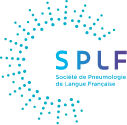Severe eosinophilic asthma represents a high burden in term of healthcare costs. Biotherapies targeting interleukin (IL-5) or its receptor (IL-5R) have been developed and allow a tangible improvement of the asthma disease condition. However, all patients do not respond in the same manner to these treatments. Even if high blood eosinophil counts appear to be associated with a reduction in exacerbations with treatment targeting IL5, we lack of biomarkers for the prediction of a super-response to these very expensive treatments. The goal of this study was to highlight biomarkers of “super response” in the sputum of severe eosinophilic asthmatics.
Eighty subjects were recruited in our asthma clinic. Super-responders to biotherapy were defined as patients combining no chronic treatment with oral corticosteroids, no exacerbation, ACQ lower than 1.5 and/or ACT greater than 19. Eosinophil peroxidase (EPX), IgE, IL-3, IL-4, IL-5, IL-13, IL-25, IL-33, GM-CSF, TSLP and eotaxin-1 levels were measured in the sputum of these patients before anti IL-5/anti IL-5R treatment.
Fifty-three patients treated with anti-IL-5 and 27 with anti-IL5R were assessed. Among them, 20 were classified as super-responders. We observed that these super responders were characterized by an increase in sputum macrophages and lymphocytes counts compared to other patients and a trend for an increase in sputum eosinophils. In addition, the level of sputum IL-5 was higher in the super responder group compared to the other with a trend for EPX.
Sputum IL-5 appeared to be a marker of super response to anti IL-5/IL-5R in a cohort of severe eosinophilic asthmatic. These preliminary results need to be validated in a larger cohort.
El texto completo de este artículo está disponible en PDF.
© 2022
Publicado por Elsevier Masson SAS.
 , C. Brion 3, G. Bock 4, S. Graff 1, S. Gerday 2, M. Henket 1, V. Paulus 1, F. Guissard 1, R. Louis 1, F. Schleich 1
, C. Brion 3, G. Bock 4, S. Graff 1, S. Gerday 2, M. Henket 1, V. Paulus 1, F. Guissard 1, R. Louis 1, F. Schleich 1


